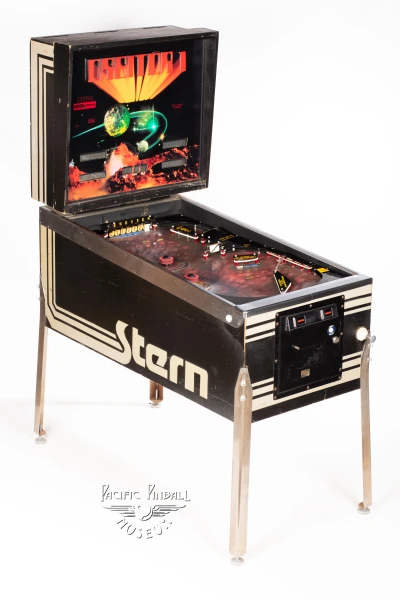Orbitor 1
Orbitor 1 Preview Image

Machine Details
Manufacturer
n/a
Year
n/a
Technology Era
n/a
Machine Description
Content Under Review
Help us improve this content
Your support accelerates our content verification efforts.
Support Our WorkOrbitor 1 represents one of the most innovative and experimental pinball machines of the early 1980s, featuring a groundbreaking playfield design that created the illusion of three-dimensional space. Released by Stern Electronics in 1982, the machine's most distinctive feature was its curved, vacuum-formed playfield that gave balls a unique orbital trajectory, making them appear to travel in elliptical paths as if affected by gravitational forces in space.
The game's design was the brainchild of Barry Oursler and Joe Kaminkow, who sought to create something completely different from traditional flat-playfield pinball machines. The playfield's curved surface was manufactured using a special vacuum-forming process, with the entire playing surface divided into three distinct sections of curved plastic. This revolutionary design, combined with fluorescent lighting effects and space-themed artwork, created an otherworldly playing experience that had never been seen before in pinball.
Despite its innovative design, Orbitor 1 proved challenging to manufacture and maintain. The curved playfield made traditional pinball skills less relevant, as ball movement was less predictable than on standard machines. Production numbers were relatively limited, with approximately 1,700 units manufactured. While it wasn't a commercial success, Orbitor 1 has become highly sought after by collectors and is celebrated for its unique contribution to pinball history as one of the industry's boldest experiments in alternative playfield design.
The legacy of Orbitor 1 lives on as a testament to the industry's willingness to take risks during the golden age of solid-state pinball. Its distinctive design approach has never been replicated, making it a unique milestone in pinball history and a fascinating example of how manufacturers pushed the boundaries of what was possible in pinball machine design.